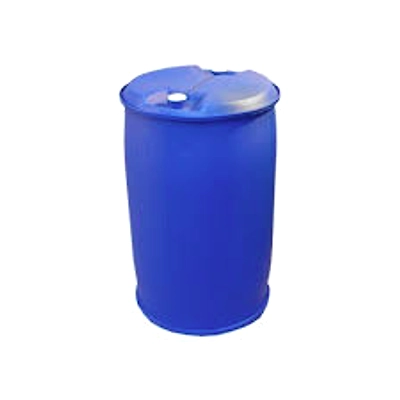IPA ( Iso Propyl Alcohol )
IPA ( Iso Propyl Alcohol )
HS Code:29051220
Chemical Formula:C3H8O
Description
Isopropyl alcohol (IUPAC name propan-2-ol; commonly called isopropanol) is a compound with the chemical formula C3H8O. It is a colorless, flammablechemical compound with a strong odor. As an isopropyl group linked to a hydroxyl group, it is the simplest example of a secondary alcohol, where the alcoholcarbon atom is attached to two other carbon atoms. It is a structural isomer of 1-propanol and ethyl methyl ether. It is used in the manufacture of a wide variety of industrial and household chemicals, and is a common ingredient in chemicals such as antiseptics, disinfectants and detergents Properties Isopropyl alcohol is miscible in water, ethanol, ether, and chloroform. It will dissolve ethyl cellulose, polyvinyl butyral, many oils, alkaloids, gums and natural resins. Unlike ethanol or methanol, isopropyl alcohol is not miscible with salt solutions and can be separated from aqueous solutions by adding a salt such as sodium chloride. The process is colloquially called salting out, and causes concentrated isopropyl alcohol to separate into a distinct layer. Isopropyl alcohol forms an azeotrope with water, which gives a boiling point of 80.37 °C (176.67 °F) and a composition of 87.7 wt% (91 vol%) isopropyl alcohol. Water-isopropyl alcohol mixtures have depressed melting points.[9] It has a slightly bitter taste, and is not safe to drink.[9][10] Isopropyl alcohol becomes increasingly viscous with decreasing temperature and will freeze at −89 °C (−128 °F). Isopropyl alcohol has a maximum absorbance at 205 nm in an ultraviolet-visible spectrum.
Iso Propyl Alcohol Uses and Applications
Solvent
Isopropyl alcohol dissolves a wide range of non-polar compounds. It also evaporates quickly, leaves nearly zero oil traces, compared to ethanol, and is relatively non-toxic, compared to alternative solvents. Thus, it is used widely as a solvent and as a cleaning fluid, especially for dissolving oils.
Medical
Isopropyl alcohol is used as a water-drying aid for the prevention of otitis externa, better known as swimmer’s ear. Early uses as an anesthetic Although isopropyl alcohol can be used for anesthesia, its many negative attributes or drawbacks prohibit this use. Isopropyl alcohol can also be used similarly to ether as a solvent or as an anesthetic by inhaling the fumes or orally. Early uses included using the solvent as general anesthetic for small mammals and rodents by scientists and some veterinarians. However, it was soon discontinued, as many complications arose, including respiratory irritation, internal bleeding, and visual and hearing problems. In rare cases, respiratory failure leading to death in animals was observed.
Laboratory
As a biological specimen preservative, isopropyl alcohol provides a comparatively non-toxic alternative to formaldehyde and other synthetic preservatives. Isopropyl alcohol solutions of 70–99% are used to preserve specimens.
Available in 160 Kgs Carboy
N-Hexane
N-Hexane
n-Hexane, also known simply as hexane, is a straight-chain alkane with the chemical formula C6H14. It is a colorless liquid with a gasoline-like odor. Here are some of its applications:
1. **Solvent**: Hexane is primarily used as a solvent in various industrial processes. Its low boiling point and non-polar nature make it effective for dissolving oils, fats, waxes, and other non-polar compounds. It is commonly used in the extraction of vegetable oils from seeds, such as soybeans, sunflowers, and canola. Hexane is also used as a solvent in the production of adhesives, coatings, and inks.
2. **Laboratory Use**: Hexane is widely used in laboratories as a solvent for chromatography and other analytical techniques. It is particularly useful for the extraction and purification of non-polar compounds.
3. **Cleaning Agent**: Due to its ability to dissolve grease, oil, and other organic residues, hexane is employed as a cleaning agent in various industries. It is used for degreasing metal parts, cleaning machinery, and removing residues from manufacturing equipment.
4. **Adhesive Manufacturing**: Hexane is a key component in the production of certain adhesives, particularly those based on rubber or polymers. It helps to dissolve the adhesive ingredients and improve their application properties.
5. **Paints and Coatings**: Hexane is used as a solvent in the formulation of paints, coatings, and varnishes. It aids in dissolving resins, pigments, and other components, facilitating the application and drying of the final product.
6. **Extraction of Essential Oils**: In addition to vegetable oils, hexane is used in the extraction of essential oils from aromatic plants. It is an efficient solvent for extracting the aromatic compounds, which are used in perfumes, cosmetics, and flavorings.
7. **Fuel Additive**: Hexane is sometimes used as a fuel additive to improve the octane rating of gasoline. However, its use in this capacity is less common compared to other additives.
It's important to handle hexane with caution as it is highly flammable and can pose health risks if inhaled or absorbed through the skin. Proper safety measures, including adequate ventilation and personal protective equipment, should be followed when working with hexane.




